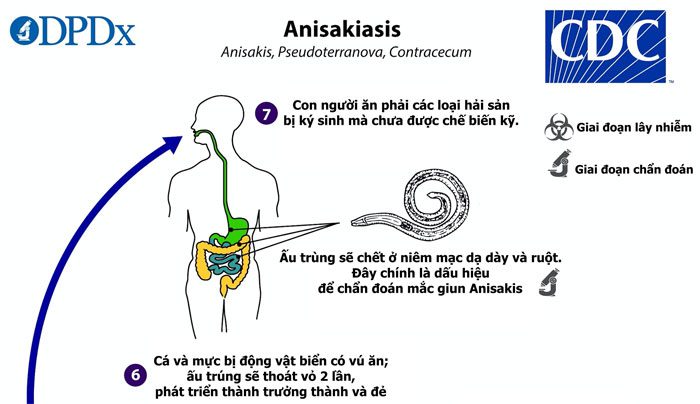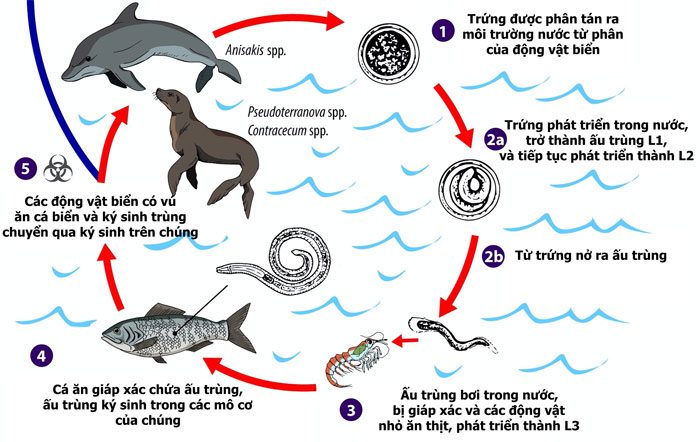Anisakis Worm is a type of parasitic worm that can infect various fish, squid, seafood, and marine mammals such as whales and dolphins, which also serve as hosts for this parasite.
According to research from the University of Washington in Seattle, from 1978 to 2015, based on 56,778 fish from 215 species, the average number of parasites per fish increased by up to 283 times, including species commonly used as ingredients in familiar sushi dishes.
Experts explain that this increase may be related to the rise in marine mammal populations since the 1970s, when the government implemented various measures to combat overfishing. Additionally, rising ocean temperatures may have accelerated the reproduction rate of Anisakis worms.


Life Cycle of Anisakis.
The danger is that this type of worm can also cause illness in humans if we consume food containing untreated or undercooked worm larvae.
Although this species cannot survive in the human body and will end its life cycle there, it can still trigger the body’s defensive reactions and create symptoms of illness. According to Chelsea Wood, the lead researcher of this study, we need not worry too much because if we choose to eat sushi at reputable establishments, the fish used will be clean, and the chef’s handling skills will be safer. Therefore, if you are a sushi enthusiast, it is advisable to choose well-known and reputable restaurants for safety.





















































